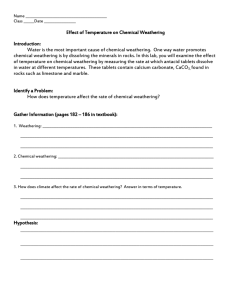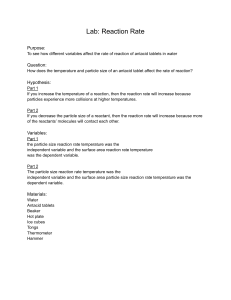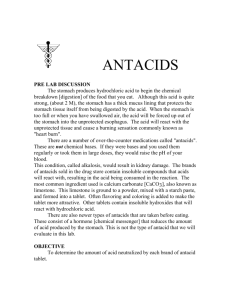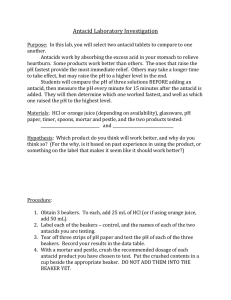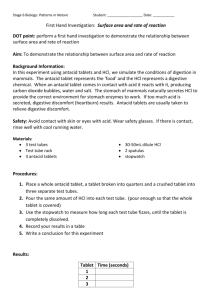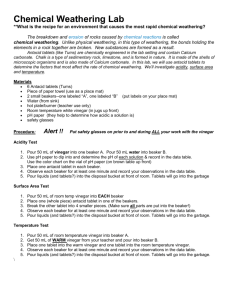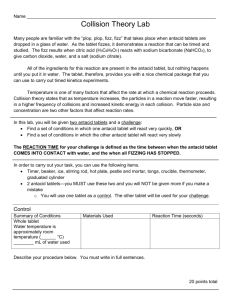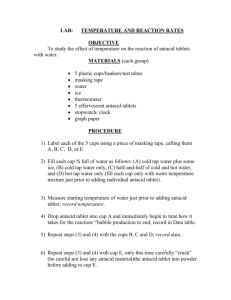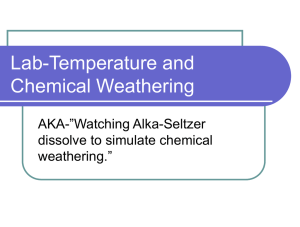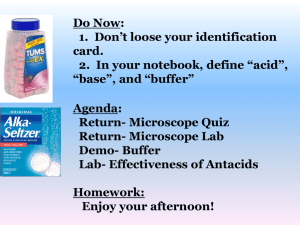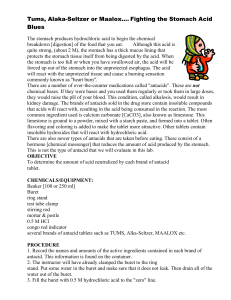D-10 Effect of Temperature on Chemical
advertisement
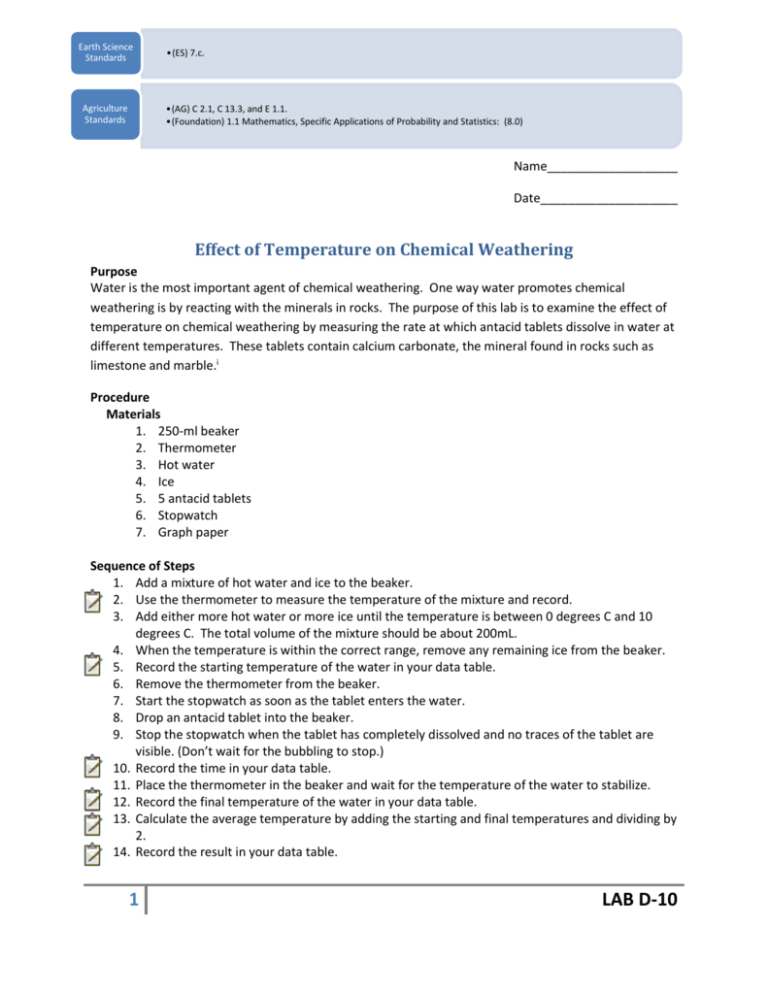
Earth Science Standards Agriculture Standards •(ES) 7.c. •(AG) C 2.1, C 13.3, and E 1.1. •(Foundation) 1.1 Mathematics, Specific Applications of Probability and Statistics: (8.0) Name___________________ Date____________________ Effect of Temperature on Chemical Weathering Purpose Water is the most important agent of chemical weathering. One way water promotes chemical weathering is by reacting with the minerals in rocks. The purpose of this lab is to examine the effect of temperature on chemical weathering by measuring the rate at which antacid tablets dissolve in water at different temperatures. These tablets contain calcium carbonate, the mineral found in rocks such as limestone and marble.i Procedure Materials 1. 250-ml beaker 2. Thermometer 3. Hot water 4. Ice 5. 5 antacid tablets 6. Stopwatch 7. Graph paper Sequence of Steps 1. Add a mixture of hot water and ice to the beaker. 2. Use the thermometer to measure the temperature of the mixture and record. 3. Add either more hot water or more ice until the temperature is between 0 degrees C and 10 degrees C. The total volume of the mixture should be about 200mL. 4. When the temperature is within the correct range, remove any remaining ice from the beaker. 5. Record the starting temperature of the water in your data table. 6. Remove the thermometer from the beaker. 7. Start the stopwatch as soon as the tablet enters the water. 8. Drop an antacid tablet into the beaker. 9. Stop the stopwatch when the tablet has completely dissolved and no traces of the tablet are visible. (Don’t wait for the bubbling to stop.) 10. Record the time in your data table. 11. Place the thermometer in the beaker and wait for the temperature of the water to stabilize. 12. Record the final temperature of the water in your data table. 13. Calculate the average temperature by adding the starting and final temperatures and dividing by 2. 14. Record the result in your data table. 1 LAB D-10 15. Repeat Steps 2 through 6 four more times, once at each of the following temperature ranges: 10-20 degrees C, 20-30 degrees C, 30-40 degrees C, and 40-50 degrees C. 16. Adjust the relative amounts of hot water and ice to produce the correct water temperatures. The total volume of water and ice should always by about 200mL. 17. On the graph, plot your data. 18. Draw a smooth curve through the data points. Data: Starting Temperature (C) Dissolving Time Final Temperature (C) Average Temperature (C) Results: Average Temperature Dissolving Time 2 LAB D-10 Conclusion: 1. At which temperature did the antacid tablet dissolve most rapidly? 2. At which temperature did the antacid tablet dissolve most slowly? 3. What is the relationship between temperature and the rate at which antacid tablets react with water? 4. Would a limestone building weather more rapidly in Homer, Alaska, or in Honolulu, HI? (Both cities receive about the same amount of precipitation in an average.) Explain your reasoning. Additional Resources: http://geography.sierra.cc.ca.us/Booth/Physical/chp15_gradation/denudation.htm http://library.thinkquest.org/20035/chemical.htm http://wardsci.com WARDS’s Natural Science i Rangel, Maria (2008). Effect of Temperature on Chemical Weathering. Holtville High School Agriculture Department. 3 LAB D-10
